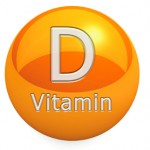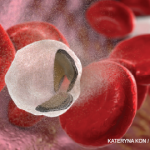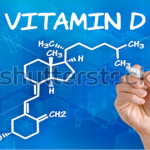Management goals are to prevent vitamin D deficiency, reduce morbidity, and prevent adverse outcomes. To prevent vitamin D deficiency in adults (older than 50 years) with inadequate sun exposure, a dose of 800–1,000 IUs of vitamin D3 daily along with sensible sun exposure is generally recommended, as noted earlier.2,6,7 Alternatively, 50,000 IUs of vitamin D3 may be given monthly along with sensible sun exposure. For adults with malabsorption syndromes, a dose of 50,000 IUs of vitamin D2 administered as frequently as weekly is recommended.
Discontinuations
Eli Lilly has discontinued manufacturing their recombinant human insulin isophane suspension (NPH) 50%–regular insulin 50% combination product due to its declining use. Only about 3,000 patients in the United States are affected.12
To treat vitamin D deficiency in adults (older than 50 years) with inadequate sun exposure, a dose of 50,000 IUs of vitamin D2 once a week for eight weeks is recommended.2,6,7 A 25(OH)D level should be obtained after the initial eight weeks of treatment, and if it is still less than 30 ng/mL, an additional eightweek course of weekly 50,000 IUs of vitamin D2 should be pursued. For adults with malabsorption syndromes, a dose of 50,000 IUs of vitamin D2 administered daily or every other day is generally recommended. In adults receiving medications that increase the metabolism of active vitamin D, give 50,000 IUs of vitamin D2 every 2 weeks for 8–10 weeks, or administer 50,000 IUs of vitamin D2 every week if the 25(OH)D level is less than 30 ng/mL. In pregnant women, the effects of loading doses of vitamin D have not been studied. It may be prudent to replete insufficiency in women by giving 800–1,000 IUs of D3 daily. Once patients have completed loading doses of vitamin D and their levels are above 30 ng/mL, they may be maintained on 800–1,000 IU daily of vitamin D3 or, alternatively, 50,000 IUs of vitamin D2 once monthly.
Vitamin D should be taken in conjunction with calcium supplementation. In patients without impairment of 1-α-hydroxylation (hepatic impairment), metabolites not requiring this step are preferred, such as calcitriol (1,25-dihydroxyvitamin D2). Otherwise, the choice of vitamin D depends on the characteristics and severity of the deficiency. In patients with normal absorptive capacity, vitamin D3 may be preferred, whereas in severe nutritional deficiency, vitamin D2 may be preferred. The frequency of dosing seems to be less important than the cumulative amount of vitamin D obtained. Many prefer one of the over-the-counter preparations, such as vitamin D3 2,000 IUs, in patients with normal hepatic and renal function.


